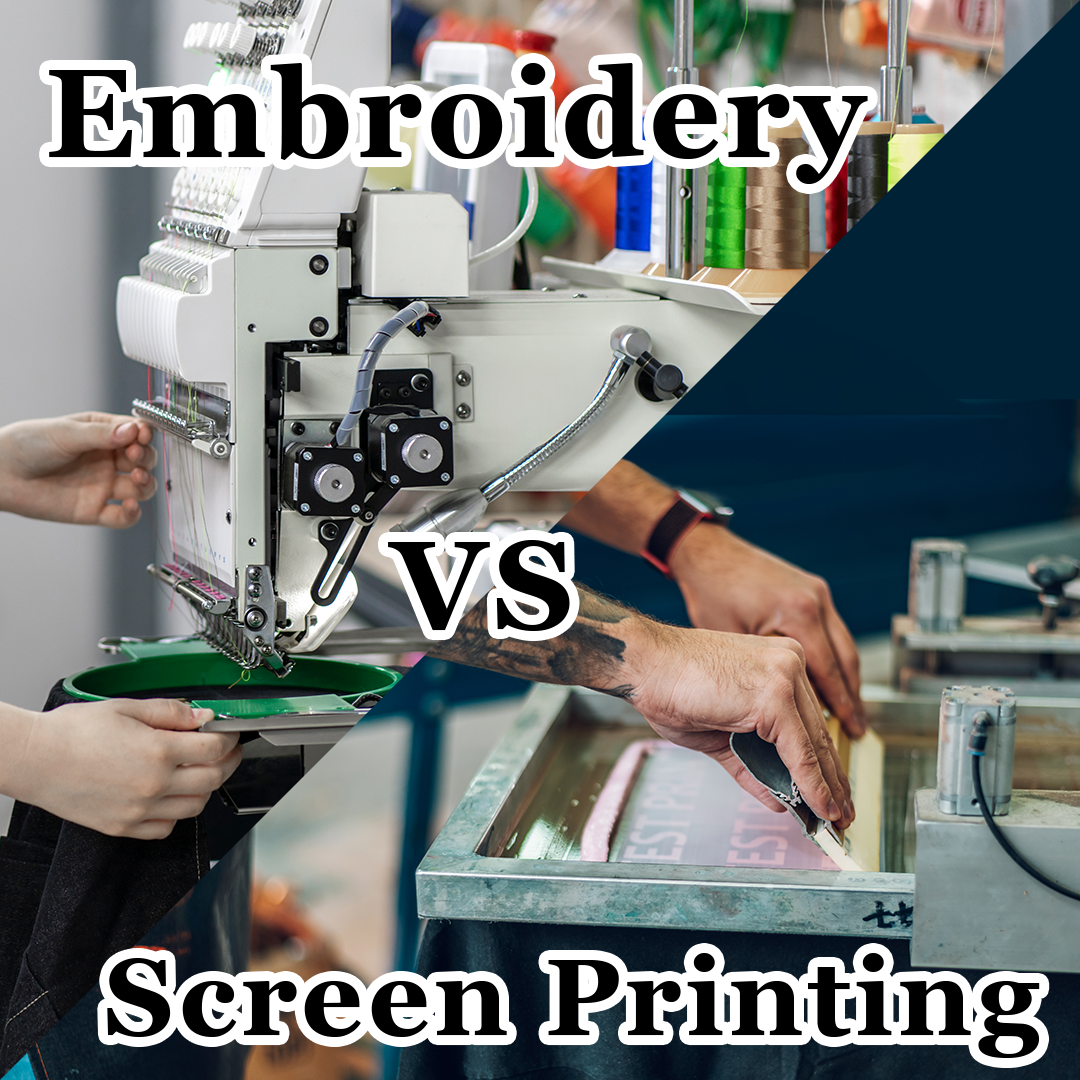When it comes to custom apparel, two of the most popular decoration methods are screen printing and embroidery. Each offers distinct advantages, making them suitable for different types of designs, materials, and applications. Understanding the key differences can help you make an informed choice for your business, brand, or personal project.
What is Screen Printing?
Screen printing is a process that involves pushing ink through a mesh screen onto fabric. A stencil, or "screen," is used to create the design, and each color in the design requires a separate screen. This method is widely used for t-shirts, hoodies, and other fabric-based products.
Pros of Screen Printing:
-
Vibrant Colors: Screen printing produces bold, bright colors that stand out, even on darker fabrics.
-
Cost-Effective for Large Orders: Because the setup process requires creating screens, it becomes more economical with higher quantities.
-
Smooth Finish: The ink sits on top of the fabric, providing a clean and professional look.
-
Versatile Application: Works well on cotton, polyester blends, and other common apparel fabrics.
Cons of Screen Printing:
-
Not Ideal for Small Runs: The upfront setup costs make screen printing less practical for small quantities.
-
Limited Color Blending: Each color requires a separate screen, making intricate shading and gradients more challenging.
-
Potential for Wear Over Time: While high-quality inks and curing processes can improve longevity, prints may eventually fade or crack with repeated washing.
What is Embroidery?
Embroidery is the process of stitching a design onto fabric using thread. This method is often used for polo shirts, hats, jackets, and corporate apparel, providing a premium, textured finish.
Pros of Embroidery:
-
Highly Durable: Embroidered designs hold up well over time, resisting fading and wear, even after frequent washing.
-
Professional Appearance: The raised, textured finish adds an upscale look, making it ideal for business and team apparel.
-
No Color Limitations: Unlike screen printing, embroidery allows for a full range of thread colors without the need for additional setup costs.
-
Works on Various Fabrics: Embroidery can be applied to thick materials like fleece, denim, and even leather.
Cons of Embroidery:
-
Higher Cost Per Unit: Because embroidery is more labor-intensive, it tends to be more expensive, especially for large, detailed designs.
-
Limited Detail for Small Designs: Tiny text and intricate details can be difficult to reproduce with thread.
-
Not Ideal for Large Coverage: Large embroidered designs can become stiff and heavy, making them less comfortable on lightweight fabrics.
Which Method is Right for You?
The choice between screen printing and embroidery depends on your specific needs. If you need bold, colorful designs for casual wear or promotional items, screen printing is a great option. If you’re looking for a long-lasting, professional finish on polos, hats, or uniforms, embroidery is the better choice.
For businesses and brands, a combination of both methods can be effective—screen printing for everyday wear and embroidery for high-end or corporate apparel. By understanding the strengths and limitations of each, you can ensure that your custom apparel aligns with your brand’s image, budget, and intended use.

